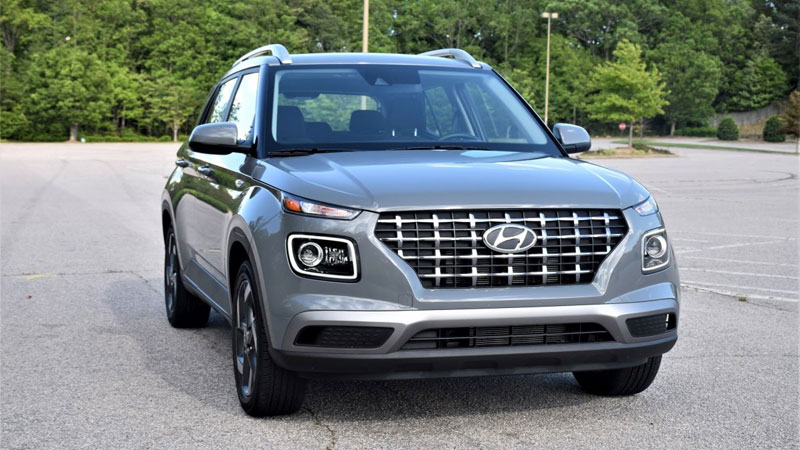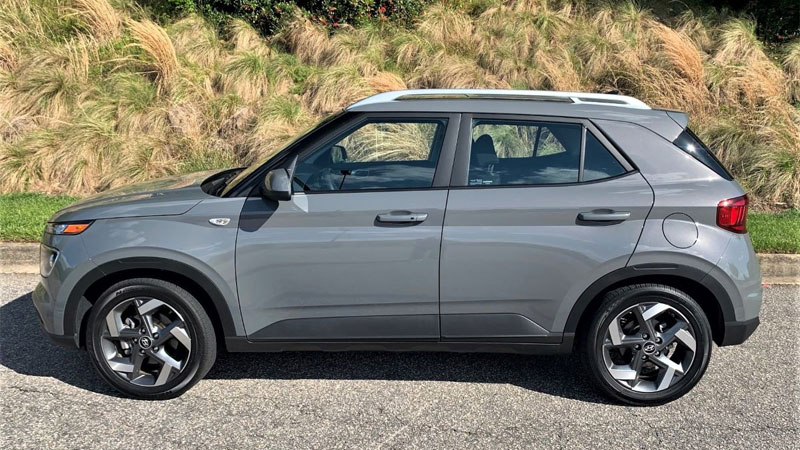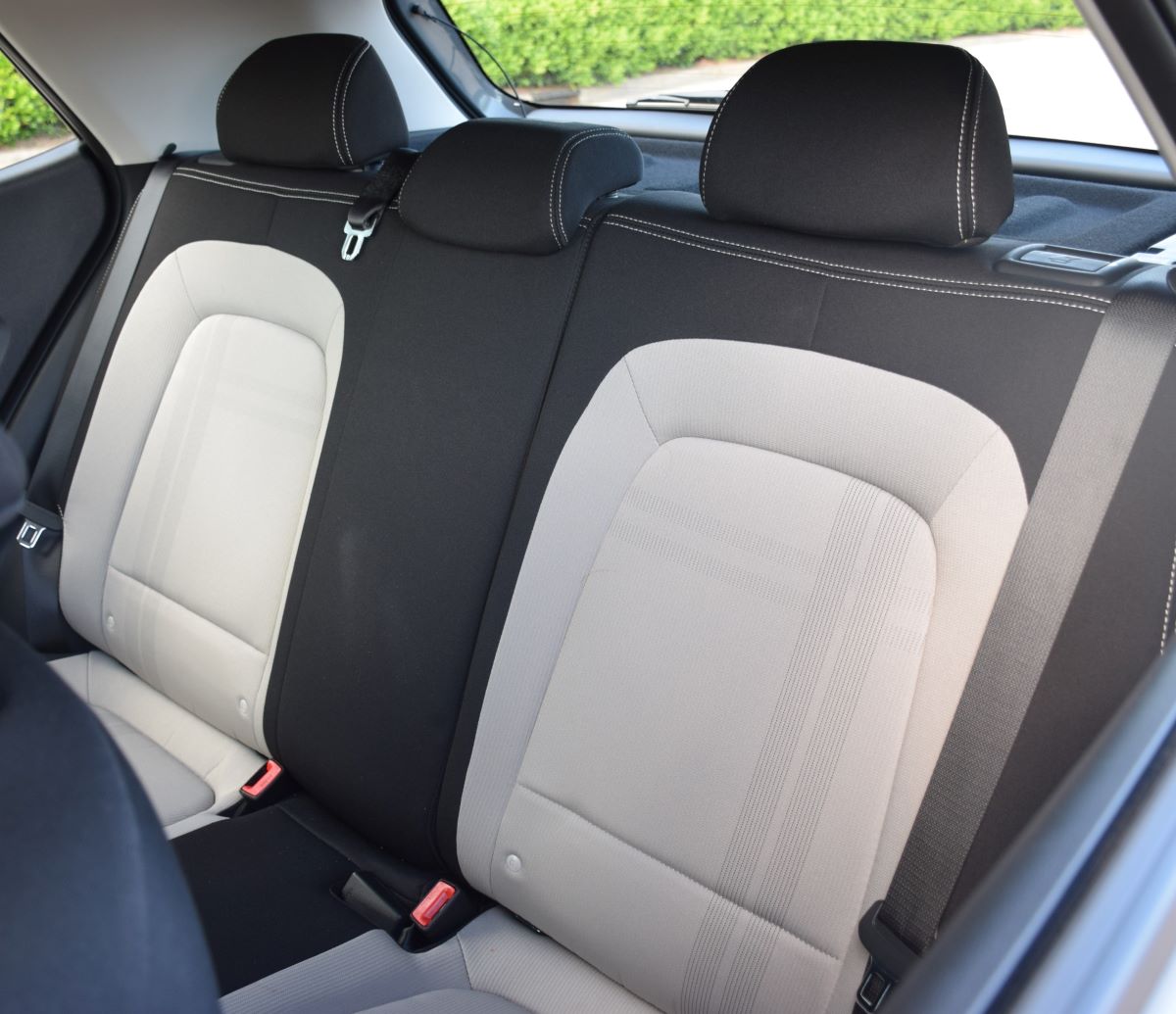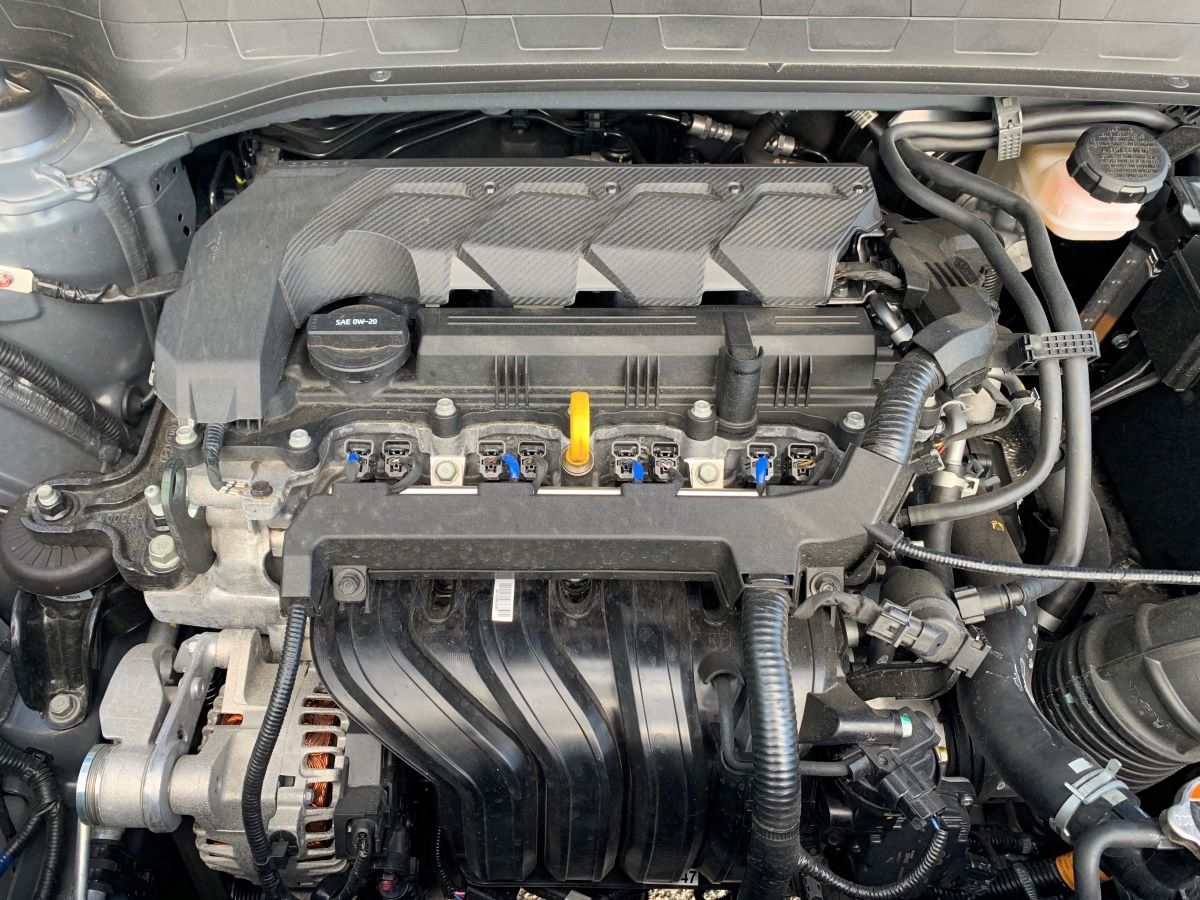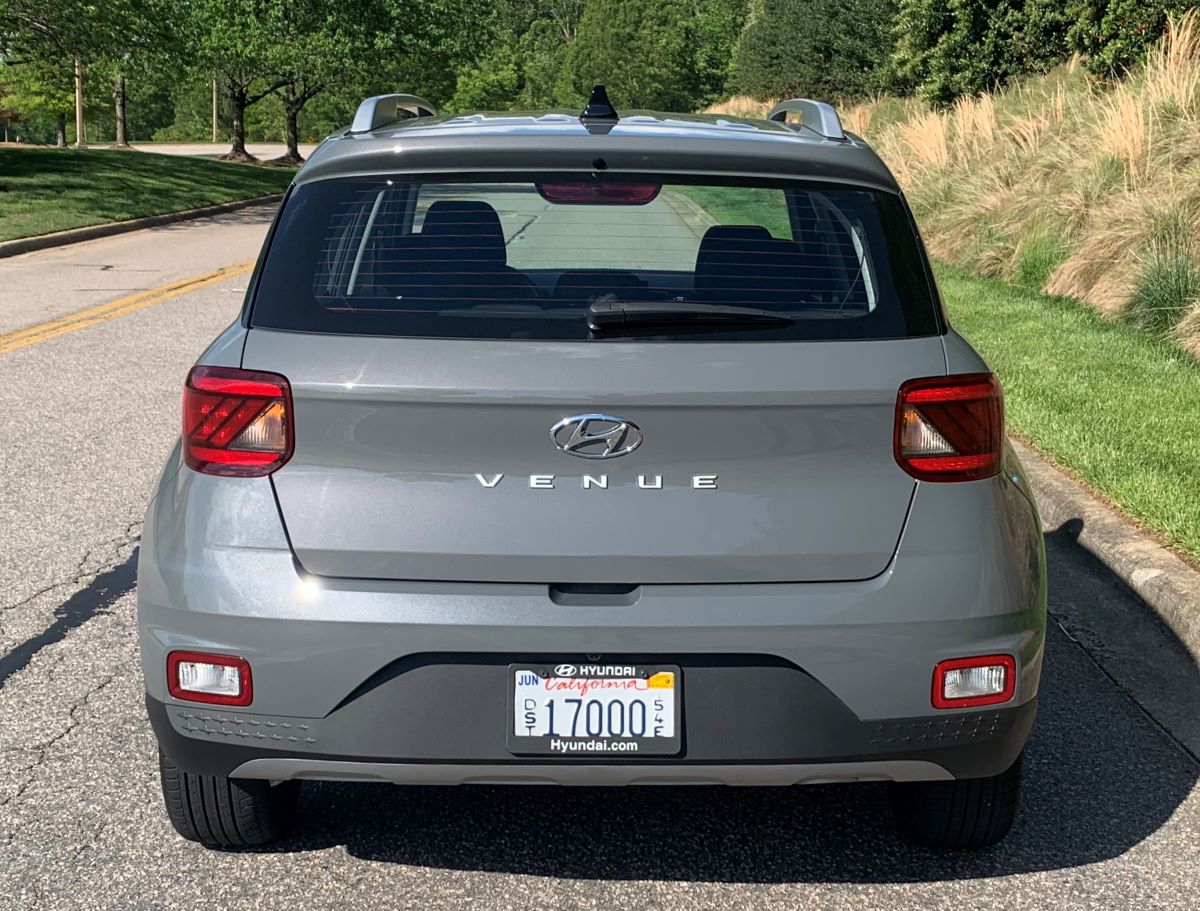Hyundai’s newest crossover is also its smallest one yet.
The 2020 Hyundai Venue is an all-new model, the smallest crossover in this Korean brand’s arsenal. Slotted just below the Kona, the Venue brings new crossover affordability to the market in a front-wheel-drive-only vehicle. It’s the latest in an onslaught of new or updated Hyundai SUVs, a model we think will appeal to current hatchback owners.
Designated as a subcompact crossover, the tiny Venue is followed in Hyundai’s utility vehicle lineup by the Kona, Tucson, Santa Fe, and Palisade. In California, Hyundai also offers the Nexo Fuel Cell, a hydrogen fuel cell crossover.
2020 Hyundai Venue Review
Hyundai offers the 2020 Venue in SE ($17,350), SEL ($19,250), and Denim ($22,050) trims. Add $1,120 for the destination charge.
All trims are governed by a four-cylinder engine. A manual transmission is standard, but dealers are likely to carry few equipped with one, opting instead for higher-trim versions with a continuously variable transmission.
Exterior
The Venue offers its own look, but it does take design elements from other Hyundai models, including the range-topping Palisade. The mesh grille is one feature the two models share, although the look is more refined in the Palisade.
At first glance, the Venue looks a lot like a hatchback. The layout is familiar with a long and wide hood, stubby tail, and a raised beltline. The layout reminds me of the 1980s Dodge Omni/Plymouth Horizon models, but with more body detailing and a lifted platform.
How small is the Venue? Quite small. Specifically, it sits on a 99.2-inch wheelbase and is 159 inches long. On the other hand, the Kona sits on a 102.4-inch wheelbase and is 164 inches long. Though small in stature, the Venue utilizes its interior space quite well, something we’ll discuss in the next section.
Hyundai equips the base Venue SE with projector headlights, adjustable side mirrors, and 15-inch steel wheels. Move up to the SEL trim and Hyundai swaps out the black grille for a chrome one, and adds alloy wheels and roof side rails.
The top-of-the-line Denim trim comes with projector LED headlights, LED accent lights, 17-inch wheels, LED taillamps, heated side mirrors, and an available contrasting white roof.
Interior
The Venue supplies ample room for four, but cramped space for five. That said, we think the ideal customer for this vehicle is a first-time car shopper driving alone or with a significant other.
The storage space measures 18.7 cubic feet or 31.9 cubic feet with the rear seat folded down, enabling a bicycle to fit inside. Also, the cargo cover detaches and slides into a storage channel. Take note of the tiered storage compartment underneath.
You won’t escape the plastic trap in the Venue, but at least the look isn’t tacky as it is in some models. The molded dashboard is a one-piece design with a large glovebox.
The open storage compartment above the box is a touch we like — it isn’t large enough to hold a cell phone, but it is useful for change, trinkets, and other small items. The center console is wrapped in brightwork trim and includes an open (and deep) storage space for a cellphone.
Helping the Venue’s cause is its high roofline, which supplies tall passengers with excellent headroom. Most models feature gray or black upholstery with beefier cloth and imitation leather trim.
After a week’s worth of driving, I can say better lumbar support and thicker padding would be welcome. Nevertheless, the seats are exactly what you’d expect to find in a model in this category.
The base model doesn’t come with a driver’s armrest/storage compartment. That feature is available in the SEL and included with the Denim. Full power accessories, a tilt-and-telescopic steering column, and air conditioning are standard. Automatic climate control and heated front seats are available.
Safety
Hyundai certainly did not skimp on safety when designing the Venue. All trims come with forward collision-warning assist with pedestrian detection, lane-keeping assist, and driver attention warning.
Blind-spot warning with rear cross-traffic alert is included with the Denim trim and bundled within a $1,150 Convenience Package offered on the SEL. That package also brings in a leather-wrapped steering wheel and shift knob, a sliding armrest, and a power sunroof.
We think Hyundai missed an opportunity by not offering adaptive cruise control. It’s a feature that supplies separation between vehicles when activated.
Technology
The Venue’s bargain price notwithstanding, this little crossover offers generous standard tech equipment.
Hyundai equips the Venue with an 8-inch touch-screen display, four speakers, HD Radio, Android Auto and Apple CarPlay smartphone compatibility, a pair of USB ports, and Bluetooth. Satellite radio is standard with the Denim and available with the SEL trim.
There is no navigation system available – your smartphone app must do.
Performance
The front-wheel-drive-only Venue is governed by a 1.6-liter four-cylinder engine with 121 horsepower and 113 pound-feet of torque. A six-speed manual transmission is standard; most models utilize a continuously variable transmission.
Our test model with the CVT performed as expected: it delivered average step-off acceleration and decent passing power. A few times we forgot what was under the hood, causing the front tires to squeal as we pressed the pedal to the metal.
Instead of flooring it, most drivers will simply expect the Venue to do what it does best – carry them from point to point in a reasonably comfortable and efficient manner.
The Venue’s efficiency is its strong point with CVT models earning an EPA-combined 32 mpg to the 30 mpg for the manual. Both numbers are above the segment average, although slightly below what comparable car models like the Hyundai Accent offer.
Competitive Set
Slotting just below the Hyundai Kona, the Venue occupies a niche filled by other front-wheel-drive models, including the Toyota C-HR and the Nissan Kicks. But there are other models in the segment, including those with available or standard all-wheel drive.
From Ford, we have the EcoSport and from Subaru the all-wheel-drive Crosstrek. Other models to compare include the Jeep Renegade, Fiat 500X, Kia Soul, Chevrolet Trax, and the Honda HR-V. Most have a starting price around $20,000, putting crossover ownership within reach of new-vehicle shoppers
Our Recommendation
We recommend bypassing the SE trim for the SEL. Then go with the Convenience Package if you want blind-spot warning with rear cross-traffic assist. As mentioned, the power sunroof is also bundled, but you should know that it is small and covers only the front-seat area.
If you want all-wheel drive, then make the move up to the Hyundai Kona. But for everyone else, acquiring a small crossover with lots of amenities for about $20,000 is a price point with strong appeal.
2020 Hyundai Venue Specifications
| Hyundai 2020 Venue | |
|---|---|
| Segment | Subcompact SUV |
| Price Range | $18,000 (est.) |
| Destination Charge | $930 |
| Standard Engine | 1.6-liter, I4 |
| Horsepower | 121 hp @ 6,300 rpm |
| Torque (lb.-ft.) | 113 lb.-ft. @ 4,500 rpm |
| Transmission | 6-speed manual or CVT |
| Seating | 5 |
| Curb Weight (pounds) | 2,557 to 2,732 |
| Wheelbase (inches) | 99.2 |
| Length (inches) | 159.0 |
| Width (inches) | 69.7 |
| Height (inches) | 61.6, 62.7 |
| Headroom (f,r…inches) | 39.4, 38.6 |
| Legroom (f,r…inches) | 41.3, 34.3 |
| Shoulder room (f,r…inches) | 53.9, 53.7 |
| Hip room (f,r…inches) | NR |
| Storage (cubic feet) | 18.7, 31.9 |
| Gross vehicle weight (pounds) | NR |
| Towing (pounds) | NR |
| Payload (pounds) | NR |
| Fuel | regular |
| Fuel Tank (gallons) | 11.9 |
| EPA Fuel MPG (city/highway/combined) | NR |
| Manufacturing Plant | Ulsan, South Korea |
Data compiled by Tom Keegan. Specifications supplied by the manufacturer.
See Also – Diminutive SUV: Hyundai Venue
Photo copyright Hyundai Motor America.
- 2024 Mazda CX-50: A Compact SUV with Premium Aspirations - Apr 15, 2024
- 2024 Ford Mustang (Iconic Pony Car Evolves) - Apr 4, 2024
- 2024 Ford Maverick (Looks Like a Truck, Drives Like a Car) - Mar 28, 2024

